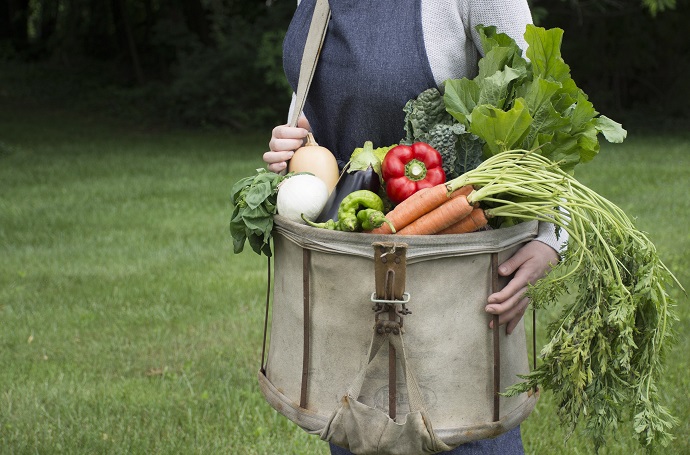Where does SAGE Dining’s food come from?

At times, we’re asked, “Where does your food come from?” We’re always thrilled to answer this question, and we wish it was asked more often. At SAGE, we think it’s important for students to know where their food comes from — both to recognize the time, skill, and resources necessary to produce the food they eat, and to understand the implications of their consumption for soil and water quality, animal welfare, local economies, and global climate change. Food is one of the many lenses through which our students can understand their place in the world, and we believe the best way to encourage sustainable behavior is to model it ourselves.
Because we’re not driven by opaque volume rebates from large, national foodservice distributors, we encourage each of our venues to purchase as much product as possible from local, sustainable providers, including using food grown in schools’ own farms and gardens. Approximately 40% of our purchases are manufactured, produced, or grown within a 150-mile radius of the communities they supply, which is above average within the industry. That number rises to 70% if we include products purchased from grocery houses.
We don’t set a single numeric target because each venue’s environment is so different. Some have large farms and orchards that supply our kitchens. Others must bring in product from warmer regions during most of the school year. Our Managers do their best given their specific circumstances, including supporting on-campus gardens to maximize their local product. In fact, more than 60% of SAGE schools have a type of garden — from herb boxes to farms.
To support local purchasing efforts, SAGE’s Purchasing Department collaborates with our Chefs at each school to identify potential partners and suppliers. To make sure that the products we buy are both safe and local, SAGE District Managers and Purchasing Representatives visit each local purveyor to ensure that each manufacturer, farmer, or supplier is using Good Agricultural Practices and Good Manufacturing Practices, or is Third-Party Certified.
We emphasize the importance of sustainable sourcing with signage in the server highlighting organic items, sustainability programs, local farmers whose food is featured, and produce grown both on campus and within 150 miles of campus. Our catering menus highlight local ingredients and purveyors, as do our daily line signs.
We’re very proud of the leadership role we’ve played in promoting local and sustainable sourcing within our schools and beyond — and we’re committed to doing even more in the future.














